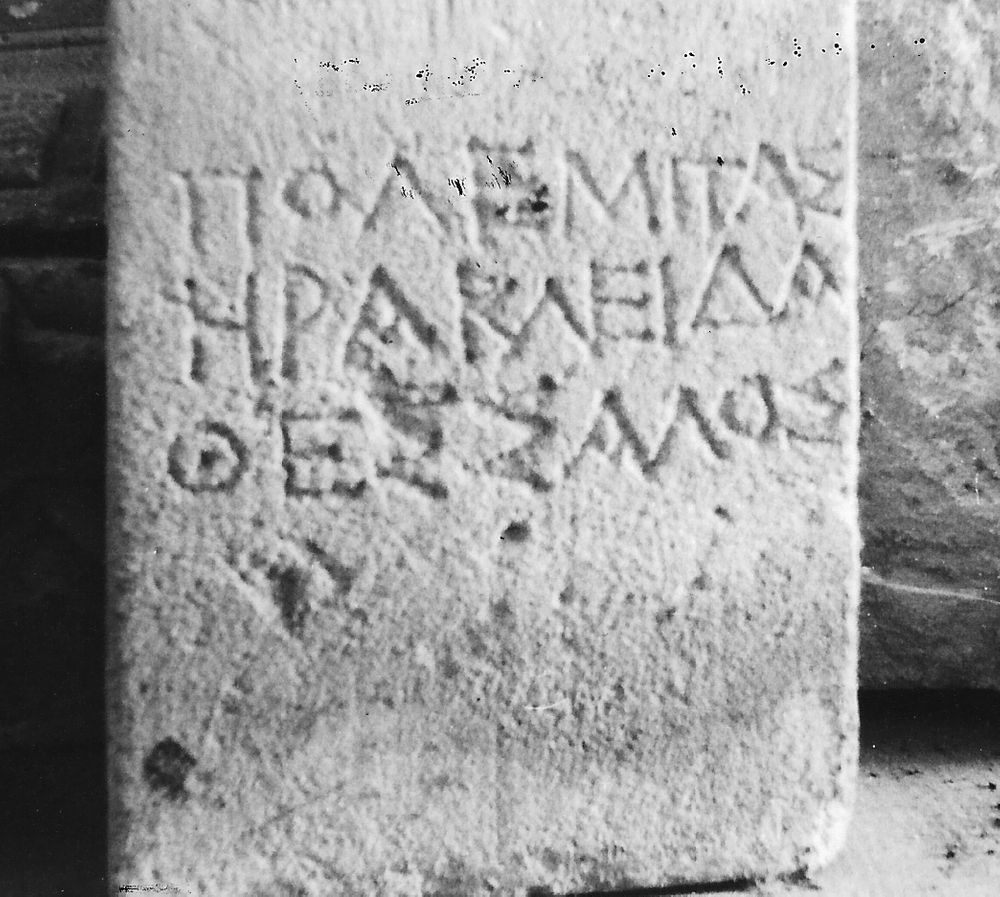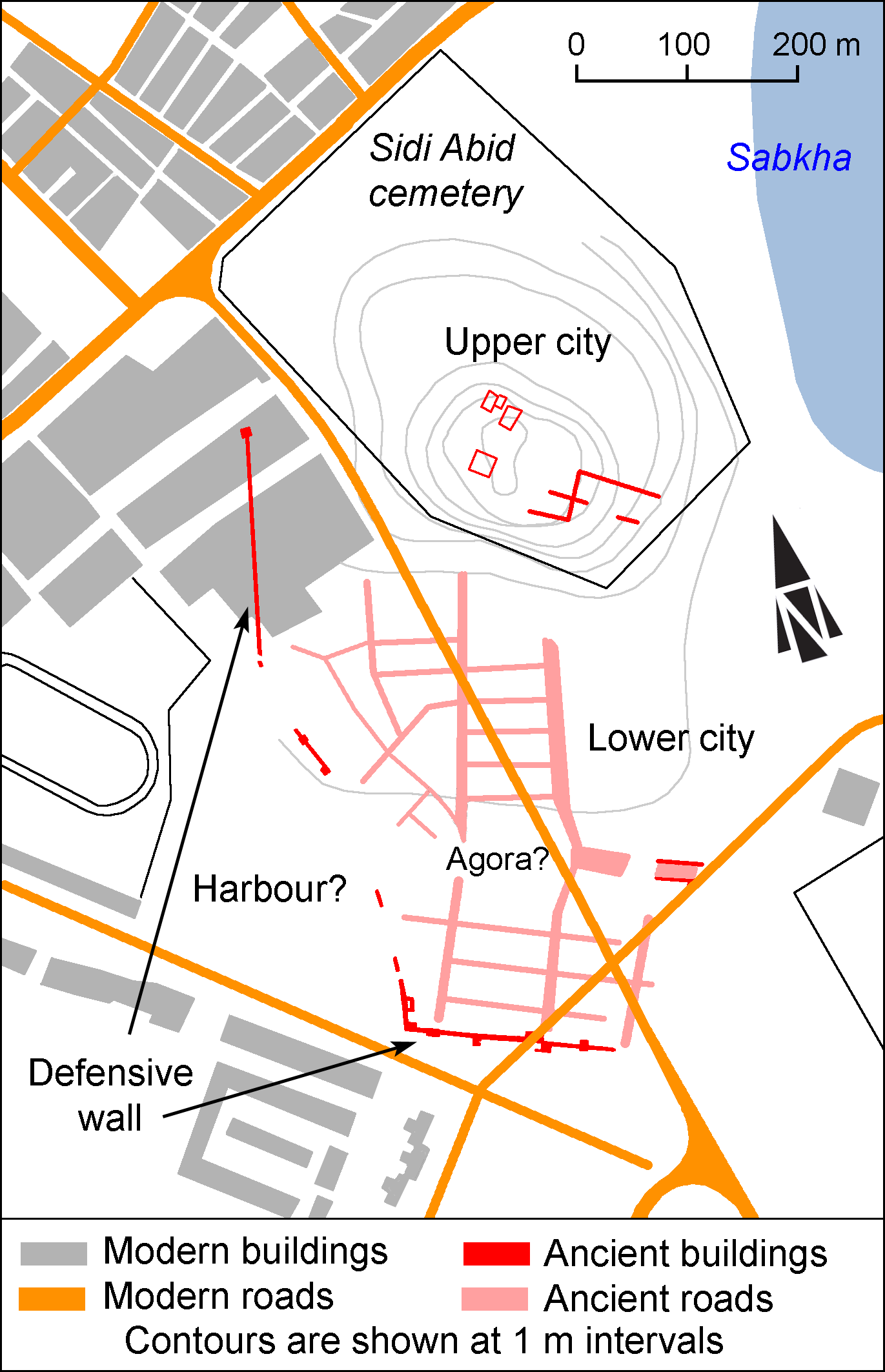EpiDoc XML:
IGCyr0107002
Trismegistos ID:
47970
Source description
Support: Sandstone stele, slightly tapering, with plain moulding above (under moulding w: 0.385-0.43 × h: 1.025 × d: 0.25).
Layout: Inscribed on the face, beginning at 0.33 under the moulding.
Letters: 0.04-0.055 rather roughly cut; alpha with dropped bar, dotted theta, non-slanting mu, pi with lengthening right stroke, slanting sigma.
Date: Second to first centuries BC (lettering).
Findspot: Found before 1895 presumably at Euesperides ➚: Necropolis.
Place of origin: Findspot.
Last recorded location: Cyrene Museum, 233. First seen in 1895 by Clermont-Ganneau at Benghazi: in the Italian consulate (squeeze). Seen in 1909 by Bates and Norton and photographed by the former at As Salmani, near Benghazi: in the English vice-consulate. After World War II, it has been kept in Shahat, Cyrene Museum, where Morelli saw it in 1960. Seen by C. Dobias-Lalou in 1976 in Shahat: Cyrene Museum.
Text constituted from: Transcription from stone (CDL).
Bibliography
Robinson 1913, n. 102, without illustration, whence Sammelbuch 5926; SECir, 291 (Morelli, as unpublished, without illustration); IGCyr 010700 ➚. Cf. Masson 1967, p. 225, footnote 3; Marengo 1985, pp. 150-151; Uhlenbrock 1999, p. 81 and fig. 5 (photograph by Bates) and Dobias-Lalou, BE, 2000.745, whence SEG, 49.2358.
Text
Apparatus
1: Πολεμίτας Robinson 1913: Πτολεμίτας Sammelbuch
French translation
Polemitas fils d'Herakleidas, Thessalien.
English translation
Polemitas son of Herakleidas, a Thessalian.
Italian translation
Polemitas figlio di Herakleidas, tessalo.
Commentary
Dating this stele is difficult because it does not belong to a group of similar inscriptions; the material may explain some differences with the numerous inscriptions of Cyrene; however it is certainly later than the third century suggested in Fraser – Matthews 2000 and may be rather compared with another inscription of the newly founded Euesperides IGCyr0711002.
New unpublished information, not yet available in IGCyr, was provided by J. Aliqot and J.B. Yon (Hisoma laboratory, Lyon): during his stay at Benghazi in 1895, Clermont-Ganneau had seen the stone and made a squeeze, which is still kept in his archive at the Cabinet du Corpus Inscriptionum Semiticarum (Institut de France) in Paris (about Clermont-Ganneau's visit to Cyrenaica, see also Masson – Reynolds 1977-1978).
Uhlenbrock published in 1999 a report written by Bates after his surveying expedition of 1909 to Cyrenaica, which preceded the Norton expedition of 1910-1911. From this paper, kept in the Museum of Fine Arts at Boston, we hear that the stele had been found at Salmani, a suburb of Benghazi near the sabkha of the same name near the place of ancient Euesperides, and was kept in the English Vice-consulate of that city. After World War II, this was erroneously brought to the Cyrene Museum.
A transcription of the inscription would have beed joined to the archives of De Cou, the epigraphist of the Norton mission of 1910, giving way to the diplomatic transcription of Robinson.
Morelli republished the inscription as from Cyrene, without identifying it with the publication of Robinson, and the error was detected by Marengo.
For a mention of another Thessalian in Cyrenaica, see IGCyr1306002.
CC BY-NC-SA 4.0 Deed Attribution-NonCommercial-ShareAlike 4.0 International License.
All citation, reuse or distribution of this work must contain a link back to DOI: https://doi.org/10.60760/unibo/igcyrgvcyr2 and the filename (IGCyr000000 or GVCyr000), as well as the year of consultation.

